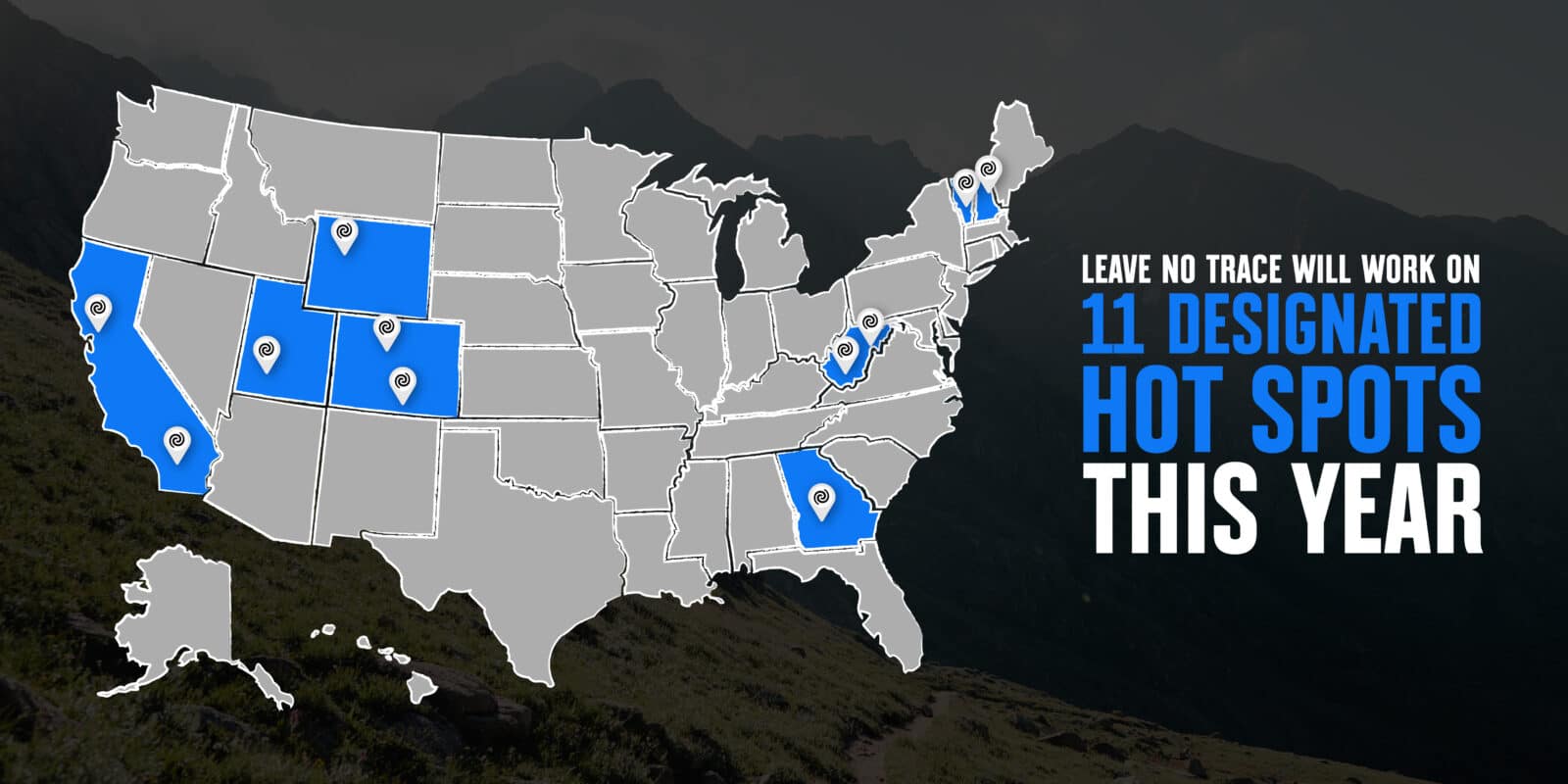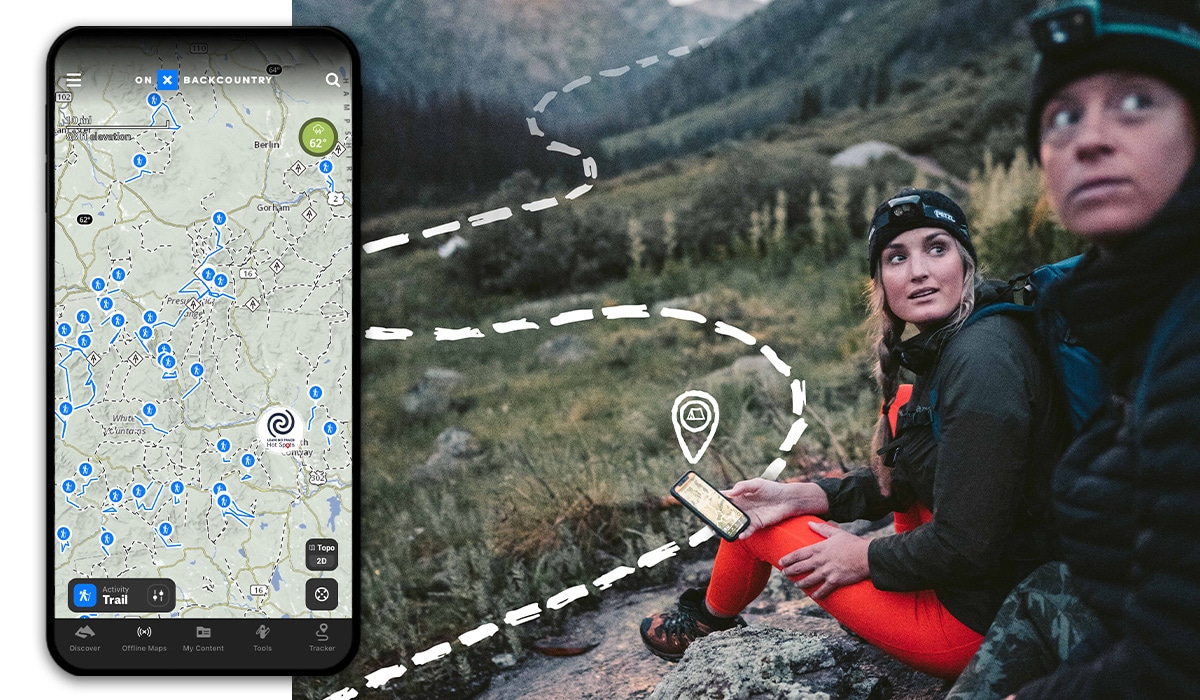What Are Leave No Trace Hot Spots?
Across the country, there are trails, landscapes, and recreation areas that are getting overused, abused, and over-loved. Through a self-nomination process, communities can make a case for their local zone to receive educational support from Leave No Trace. The organization sees about 100 applications each year, according to Leave No Trace Education Director JD Tanner. The objective is to turn these examples of irresponsible recreation into beacons of sustainability and, potentially, make it on their Gold Standard Site list.
How Does an Area Become a Hot Spot?
Leave No Trace looks for a variety of things that can be categorized into a bucket referred to as “being loved to death.” This can look like trail widening, user conflicts, litter, or degradation of landscapes at national parks and forests, state land, or municipal parks. In a recent case study from Leave No Trace, San Diego swimming hole—Three Sisters and Cedar Falls— has been overrun with pet waste, litter, and vandalism. One way to elevate your application to the top of the list is to “have a partner or multiple partners included in the application. For example, a park may apply and partner with their local Friends Group and maybe another non-profit or two in the area that have all committed to make the Hot Spot a success,” shares Tanner. This holistic community approach can really demonstrate that multiple stakeholders will share the accountability of getting the area back on track.
2022 Hotspots

Across the country, from east coast to west, there are 11 designated Hot Spots that Leave No Trace will be working on this year.
- Dolly Sods Wilderness – Monongahela National Forest, WV
- Summersville Lake – U.S. Army Corps of Engineers, WV
- Bourn Pond in the Lye Brook Wilderness – Green Mountain National Forest, VT
- Line Creek Nature Area – Southern Conservation Trust, GA
- Three Sisters Trail and Waterfall – Cleveland National Forest, CA
- Steelhead Beach Regional Park – Sonoma County Regional Parks, CA
- Mossy Cave – Bryce Canyon National Park, UT
- Diana’s Bath – White Mountain National Forest, NH
- Bridger Wilderness – Bridger-Teton National Forest, WY
- Berthoud Pass Recreational Site – Arapaho Roosevelt National Forest, CO
- South Colony Lakes in the Sangre de Cristo Wilderness – San Isabel National Forest, CO (2022 Hot Spot Revisit)
Each of these destinations will receive hands-on support from Leave No Trace for five days. “A typical Hot Spot begins with a stakeholder meeting. The site managers, key partners, key volunteers, and any interested community members are invited to meet with Leave No Trace staff to discuss the site, the impacts they are seeing, and the plan for the next four or five days,” says Tanner. The program will include both general education best practices as well as site-specific guidance.
How onX Backcountry Helps Prevent More Hot Spots

At onX Backcountry, we believe in the restorative power of the outdoors. However, we also recognize the inherent impacts that sending more people outdoors has on the landscapes we love. Therefore, we’re aiming to create a cohort of sustainably minded adventurers who show up for trail cleanup days, at town hall meetings, and anywhere public access is up for debate. With that in mind, our app has implemented Leave No Trace icons where the 2022 Hot Spots are located so we can let those spots settle and allow Leave No Trace to conduct their mitigation work.
Additionally, the app is great for finding your next favorite trail, or something that doesn’t fall into the “top-10” picks you’ll find all over the internet. Those places are saturated and we need to give them a break. Use the Discover feature and Offline Maps to feel confident in going farther away from the crowds.